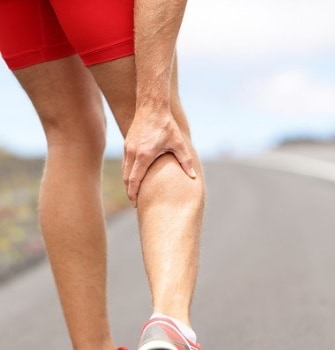In recent times we have seen a significant increase in calf injuries related to a huge uptake of recreational running on both road and trail. This is in part due to the fact that many people who are taking up running, have never been involved in running sports and hence are beginning without the physical foundations required to avoid an injury.
On top of this, calf injuries are the most common injury sustained in athletes that are involved in ball based team sports. In particular, these sports involve a lot of accelerated running, such as AFL, soccer, touch football and rugby.
Calf injuries are one of those soft tissue issues which are slower to recover primarily due to the difficulty in immobilising the tissues in the early phases of healing and repair. It can take athletes between 4-6 weeks to recover from a calf injury, and they are likely to have setbacks and recurrences as they return to sport.
Whilst calf injuries are a common occurrence, we don’t know a lot about them, such as the prognosis, risk factors & the repetition of calf strains.
The Anatomy Of The Calf
The calf muscle is made up of two main muscles, they are the Gastrocnemius & Soleus muscles. These muscles are the prime movers of the ankle joint during walking and are used to both create the push off for propulsion, as well as the deceleration that is required to control the speed of our gait.
Many people blame the Gastrocnemius muscle for calf tears, but it is as commonly seen in the deeper soleus muscle which we often forget to train. This also suggests that we may not be doing enough Soleus strengthening exercises during rehabilitation.
The Mechanics of A Calf Injury
Most calf injuries begin with an acute incident which can be directly linked to tissue damage and nearly always comes on with the pushing off component whilst running. Depending on the severity of the injury that pain can be severe instantly and prevent further activity or may increase over time after the acute onset. More minor calf injuries may start as a tightness in the muscle and then get worse over the day after onset.
The Risk Factors That Are Linked To A Calf Injury
There isn’t a lot of research that has been done into the risk factors that are linked to calf injury. At this point in time there is evidence to support the below.
- As stated above there is an increased risk in those undertaking running activities particularly associated with extreme acceleration and deceleration.
- As the athlete/player becomes older, they are at a greater risk of sustaining calf strains. This is why calf injuries have been referred to as an ‘Old man’s injury’.
- Research has shown that having had a previous injury, particularly in the last three months does cause a greater chance of reinjury.
Calf injuries are common in athletes and having some basic knowledge as to why they occur is important in prevention and treatment. In the coming weeks we will post part 2, that covers the treatment and management of calf injuries. If you need any more information, you can make an appointment with one of our Physios at a location near you.
